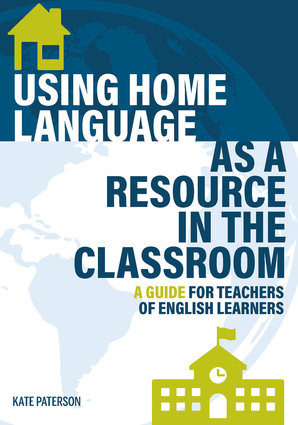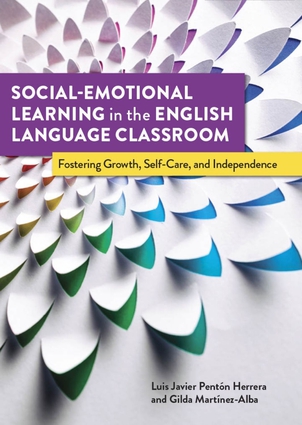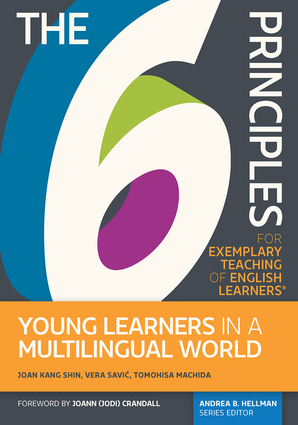TESOL Board Connect: Looking Back to Move Opportunities Forward
by Ayanna Cooper
 This year marks my second term as a TESOL Board Member. I can remember the call as if it were yesterday that I was elected. Serving during a pandemic has been nothing like what I expected or could have prepared for. The old saying and song lyric “the show must go on,” could not ring more true for me. Despite setbacks, viruses, Zoom fatigue, shutdowns, and social distancing, TESOL the association is still standing, as it should be. What I can attest to is the work we have done—but there’s still so much left to do. In the spirit of the Akan Twi and Fante languages, the word sankofa means “looking back to your roots in order to move forward.” The Sankofa is a mythical bird who can fly forward while looking back, all while holding an egg that represents the future.
This year marks my second term as a TESOL Board Member. I can remember the call as if it were yesterday that I was elected. Serving during a pandemic has been nothing like what I expected or could have prepared for. The old saying and song lyric “the show must go on,” could not ring more true for me. Despite setbacks, viruses, Zoom fatigue, shutdowns, and social distancing, TESOL the association is still standing, as it should be. What I can attest to is the work we have done—but there’s still so much left to do. In the spirit of the Akan Twi and Fante languages, the word sankofa means “looking back to your roots in order to move forward.” The Sankofa is a mythical bird who can fly forward while looking back, all while holding an egg that represents the future.
 This article is an opportunity for me to look backwards while thinking about the future. The following less commonly known fun facts about me are ones that I’ve drawn from over the years as an educator, author, and civil rights activist in order to serve the organization and its members to the best of my ability.
This article is an opportunity for me to look backwards while thinking about the future. The following less commonly known fun facts about me are ones that I’ve drawn from over the years as an educator, author, and civil rights activist in order to serve the organization and its members to the best of my ability.
-
At age 5, I played Rosa Parks in school play. I remember it being an important role. It was one of my earliest memories of learning about racism, power, and privilege.
-
I was a Girl Scout, for a short time, but also played one in two commercials. I still remember my lines.
-
I conducted my first dual language program model audit in eighth grade. Informally, of course, but I remember thinking critically about what my Haitian French-speaking classmates were doing in French class. How come I didn’t know they were bilingual? How come they didn’t teach us French?
-
I staged a small protest in high school against historic fugitive slave posters that were hung up during Black History Month.
-
During my yearlong student teaching experience in college, I created and taught a civil rights curriculum for elementary students. I still have some artifacts.
-
I performed as part of a belly dance troupe.
-
I have always taught multilingual students but didn’t learn until years later that TESOL was the best specialization ever.
Those experiences and countless others have contributed to my commitment to serve and advocate for racial, linguistic, and authentic diversity, equity, and inclusion. Yes, even belly dancing! You’d think that, by being in uncomfortable positions more than once, it would get easier. Not for me—discomfort has become something I expect and hope to keep pushing for. Not uncomfortable to the point of immobilization, but rather having the courage to keep improving during especially challenging times.

Ayanna in Preschool, Circa 1970s.
My hopes for the future include supporting authentic initiatives that create more inclusive opportunities for groups and individuals who have not been included regularly and who have been, inadvertently or not, overlooked. Clearly, we are doing the work! Research initiatives, publications, presentations, and the like need to be revamped equitably to reflect the raciolinguistic diversity of the field. Optics matter! Culturally responsive pedagogy affirms the need for students to see themselves reflected in what they are being taught.
The same holds true for professionals: We must see and have our contributions included, widely shared, and acknowledged. One of my recent projects includes supporting and working alongside school leaders who are creating learning opportunities for students to reclaim their native language. How exciting and thought-provoking is that? I also have the opportunity to support preservice educators (who may or may not become language teachers) who have an undeniable commitment to justice and liberation in their classrooms and beyond.
The future generation of TESOLers will inevitably be made up of those who, like myself, entered the profession through nontraditional routes. Let’s be sure to look back and see who might be missing. Let’s extend a hand and invite them to be part of one of the most diverse international language associations, TESOL International Association.
This year, 4 February marks what would have been the 109th birthday of Rosa Parks. Her words and actions still serve as more than a reminder: “You must never be fearful about what you are doing when it is right.” TESOL the association must commit to and continue to do what is right for its members and for the profession as a whole. Looking back while preparing for a brighter future is imperative if we are going to live by our mission and values as “professionals advancing the quality of English language teaching through professional development, research, standards, and advocacy.”
Ayanna Cooper, EdD, is a consultant, U.S. Department of State English Language Specialist alumna and current TESOL Board Member. She is the author of several publications, including And Justice for ELs: A Leader’s Guide to Creating and Sustaining Equitable Schools, Black Immigrants in the United States (coedited with Ibrahim), and serves as Language Magazine’s Pass the Mic series editor.
TESOL Blogs
Interested in writing a blog for TESOL?
Read the submission guidelines and send us your post!
Check out some of the most recent TESOL Blogs:
|
Using Picture Books to Teach Multiculturalism and Challenge Bias, by Naashia Mohamed

As classrooms become more culturally diverse, culturally sustaining pedagogy is instrumental to fostering feelings of inclusion among all students. Students should be prompted to examine their own racial, ethnic, and cultural identities and their relationships with others who share different identities in a nonthreatening manner.
One vehicle to address issues of inclusion is the use of multicultural picture books. Whether these picture books are used with young children in early childhood or school settings, well-designed books provide cross-cultural experiences, promote empathy for minoritized people, and help to generate the kind of critical dialogue that Freire believed could lead to critical consciousness and opportunities for reflection. Through picture books, teachers can create awareness of diversity, promote acceptance of difference, and prepare students to be advocates for inclusion. Read more. |
|
Are Your EL Expectations High—or Hurried?, by Barbara Gottschalk

January brings the beginning of a new year and an opportunity to start fresh. We make resolutions and hold ourselves to high expectations. After a few weeks, however, resolve dwindles. Why? Experts say we need to set achievable goals and hold reasonable expectations for ourselves.
We need to do the same for our English learners (ELs). Slow and steady worked for the turtle in the classic tortoise and hare fable, and it works for reading too. As we begin a new year, let’s take a fresh look at our reading expectations for our ELs. Are we aligning them to our students’ developmental needs as well as to the curriculum? In other words, are we holding students to high expectations or just hurrying them? Read more. |
|
Podcasts as PD for Tired Teachers, by Brent Warner

As we settle into our post-holiday haze this year, many of us are tired. Dog-tired. I wouldn’t begrudge anyone for taking their precious vacation for themselves and telling the little devil on their shoulder shouting to get more work done, “Not today.” Others of us are open to learning a bit, but aren’t quite ready to jump into online courses or conferences, or deep-diving into pedagogy books at the moment. That’s okay! As much as we tout the benefits of active learning, we also understand that maybe—just maybe—“sit & get” professional development (PD) can have its place, too.
Today, in the spirit of keeping things light, I’ll do a surface level look at the very deep world of podcasts, and share a few shows that are aimed directly at English language teachers to get you started. Read more. |
TESOL Bookstore

Featured Resources from TESOL Press
 Using Home Language as a Resource in the Classroom: A Guide for Teachers of English Learners
Using Home Language as a Resource in the Classroom: A Guide for Teachers of English Learners
Kate Paterson
What can educators do right now, in their own classrooms, to support students of varied cultures and languages? Written for current and future teachers of ELs across various educational and geographical settings, this concise guide provides educators with specific instructional practices to promote greater inclusion and educational equity for their students. Key topics covered in this book include: why home language is essential to student success; incorporating home language into instruction; planning plurilingual lessons and inclusive classrooms; home language and learning in the digital age; reimagining instructional materials; and using home language to advance social justice.
 Social-Emotional Learning in the English Language Classroom: Fostering Growth, Self-Care, and Independence
Social-Emotional Learning in the English Language Classroom: Fostering Growth, Self-Care, and Independence
Gilda Martinez-Alba and Luis Javier Pentón Herrera
While SEL is becoming increasing critical for learners’ success, teachers often feel unprepared to incorporate or address it in their classrooms. This book serves as a practical, concise, and easy-to-follow reference that English language teachers in K-12 and adult education and English language teacher educators can use in their classrooms. It is one of the limited emerging SEL resources available that is tailored to the English language teaching field and contributes to filling the existing gap of SEL in English language education. Teachers will be equipped with the necessary knowledge and skills to practice self-care and be confident in implementing SEL in their learning spaces to support and benefit their learners.
 The 6 Principles for Exemplary Teaching of English Learners®: Young Learners in a Multilingual World
The 6 Principles for Exemplary Teaching of English Learners®: Young Learners in a Multilingual World
Joan Kang Shin, Vera Savic, and Tomohisa Machida
This book guides educators in teaching young learners (2- to 12-year-olds) in an English as a foreign language setting by using The 6 Principles for Exemplary Teaching of English Learners® as a framework. A core set of principles for the exemplary teaching and learning of English as a new language, The 6 Principles and their recommended practices are targets of teaching excellence that provide teachers with the knowledge to improve instruction and assessment. Instructional techniques are illustrated throughout the book with numerous classroom examples, case studies, checklists, and vignettes.